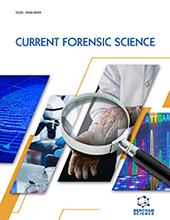Abstract
Advanced techniques are highly required in forensic science laboratories and law enforcement agencies, such as barcoding, QR code, near-field communication (NFC), and radiofrequency identification (RFID), to track and manage forensic evidence. It is requisite to have a unique code system that will identify evidence and convey all the associated information, making capturing, collection, and transfer of data to track assets in real-time more efficiently. Barcodes or QR code tag-identifying systems should be used for identification alerts, and their implementation in forensic laboratories will ease communication between the pillars of the criminal justice system. A barcode or QR code-based digital platform can be used to validate the forensic examiners or elected handlers during the examination process and to gain access based on definite functions and duties. The aim of this article is to increase transparency in the forensic case examination, collection, and transfer of data of forensic evidence in order to enhance the satisfaction and trust of the citizens in the forensic, police, and judiciary systems and minimise the chances of intentional and unintended manipulations. To safeguard evidence's integrity and identity, and enhance its accountability, barcodes or QR codes are placed on evidences that are sent to a forensic science laboratory from the scene of the crime. Thus, a scientific approach to modernizing and upgrading the forensic system is strongly recommended by using such technology.
Keywords: Barcodes, QR code, evidence, chain of custody, radio-frequency identification, near-field communication.









